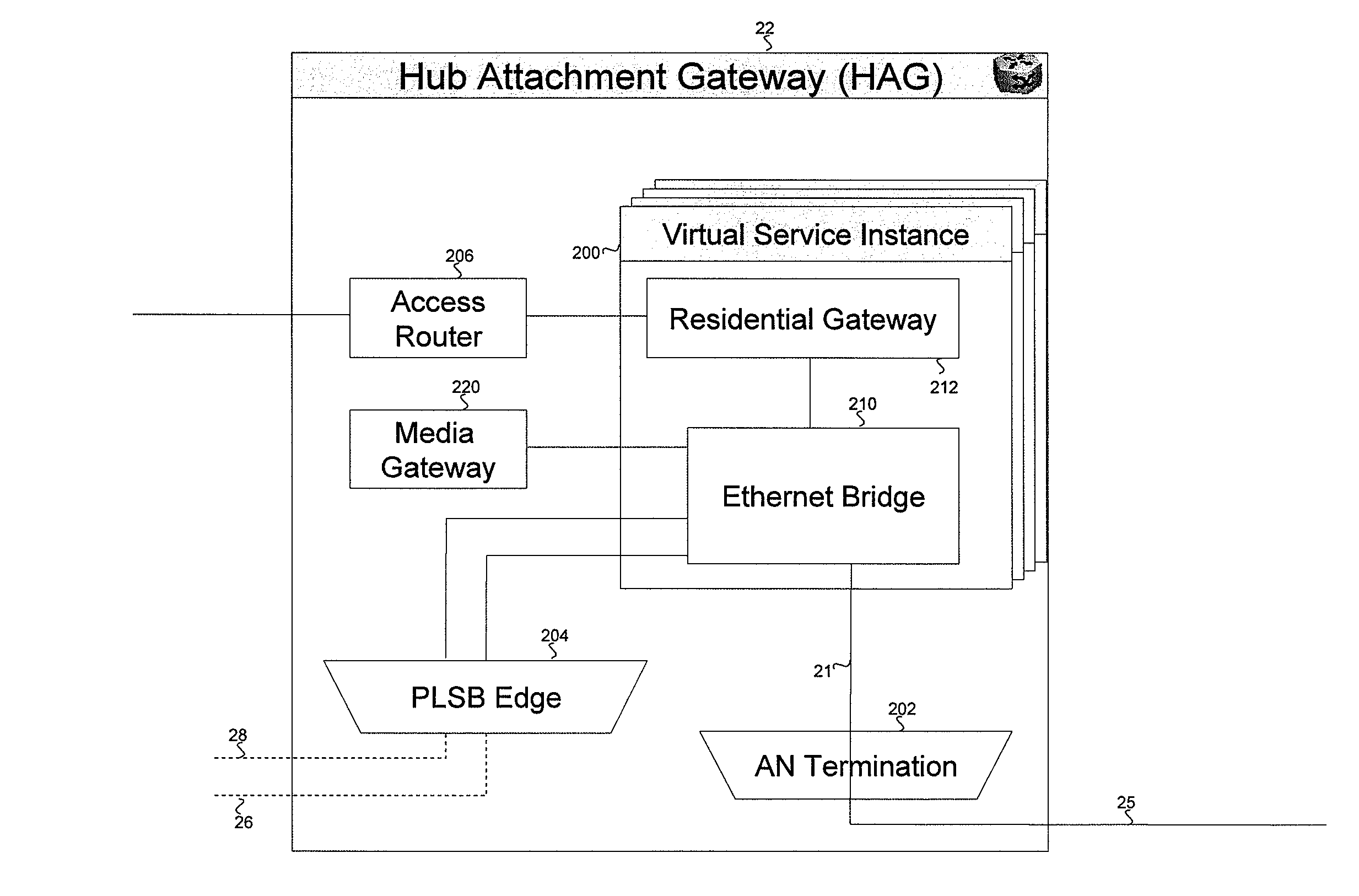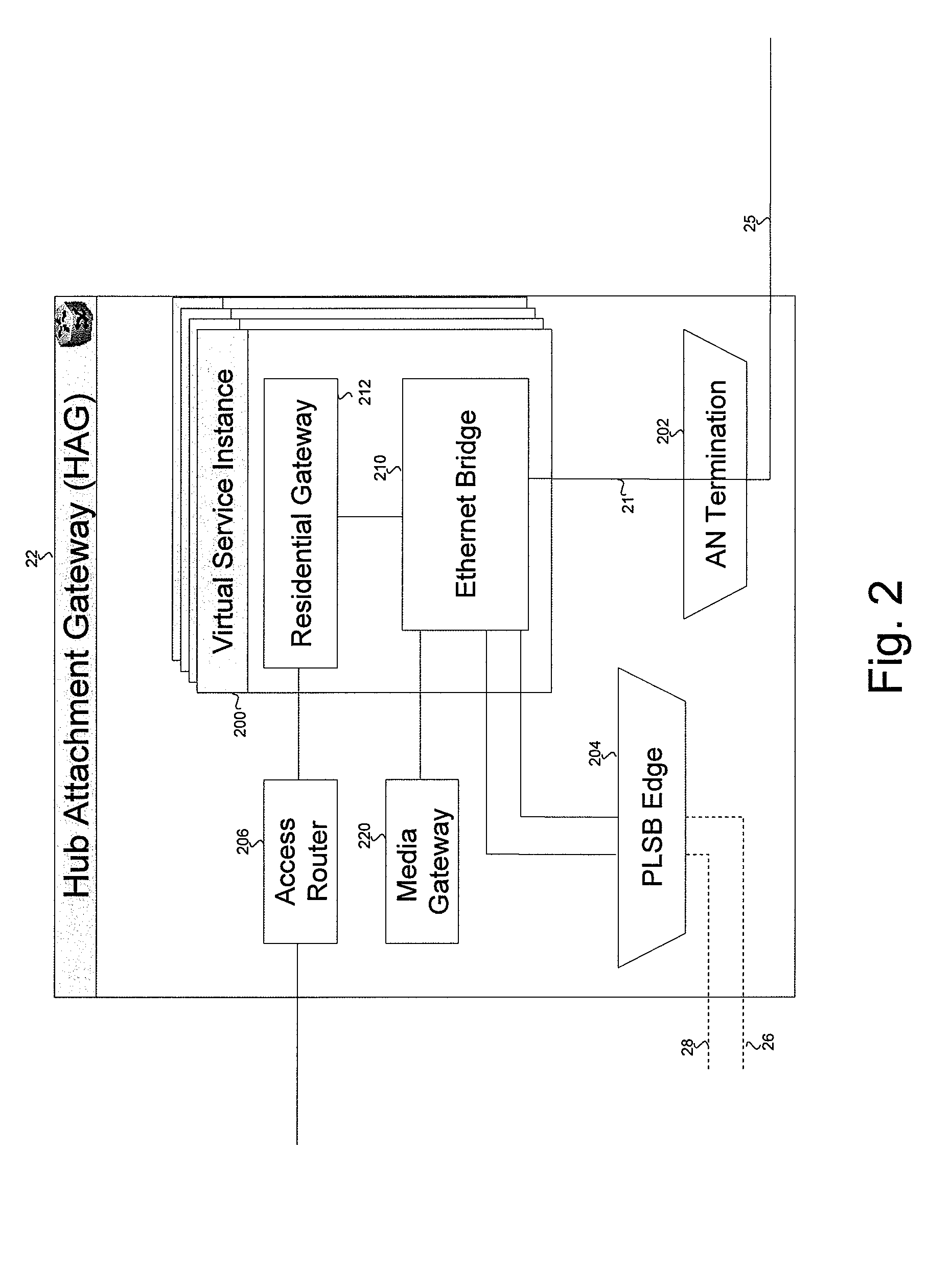Extended Private LAN
a private lan and extension technology, applied in the field of extended private lans, can solve the problems of time-consuming, time-consuming, and complicated process of creating and updating the topology of a vpn, and achieve the effect of reducing the complexity of the process, generating a significant amount of telemetry, and reducing the cost of a vpn
- Summary
- Abstract
- Description
- Claims
- Application Information
AI Technical Summary
Benefits of technology
Problems solved by technology
Method used
Image
Examples
Embodiment Construction
[0022]FIG. 1 shows a provider network 1 in accordance with an embodiment of the invention. The provider network 1 comprises a core network 40 and attachment networks 42, 44, 46. A communications subscriber has a private LAN network 10 at a premises 14, such as a home, office or other site. In a conventional manner, the private LAN network 10 comprises a wired or wireless Ethernet-based distribution network which connects devices 15. Devices 15 can include: a communication device; a server which stores music, video, digital images or any other form of media content; a broadcast receiver; a Personal Video Recorder (PVR); a printer; a home appliance; a security system; a home environment control system (e.g. controlling lighting, heating etc.) or any other device which is capable of being connected to the network.
[0023]In embodiments of the invention, an Extended Private LAN service is provided which has the effect of extending the private LAN 10 across the provider network 1 to roamin...
PUM
 Login to View More
Login to View More Abstract
Description
Claims
Application Information
 Login to View More
Login to View More - R&D
- Intellectual Property
- Life Sciences
- Materials
- Tech Scout
- Unparalleled Data Quality
- Higher Quality Content
- 60% Fewer Hallucinations
Browse by: Latest US Patents, China's latest patents, Technical Efficacy Thesaurus, Application Domain, Technology Topic, Popular Technical Reports.
© 2025 PatSnap. All rights reserved.Legal|Privacy policy|Modern Slavery Act Transparency Statement|Sitemap|About US| Contact US: help@patsnap.com



